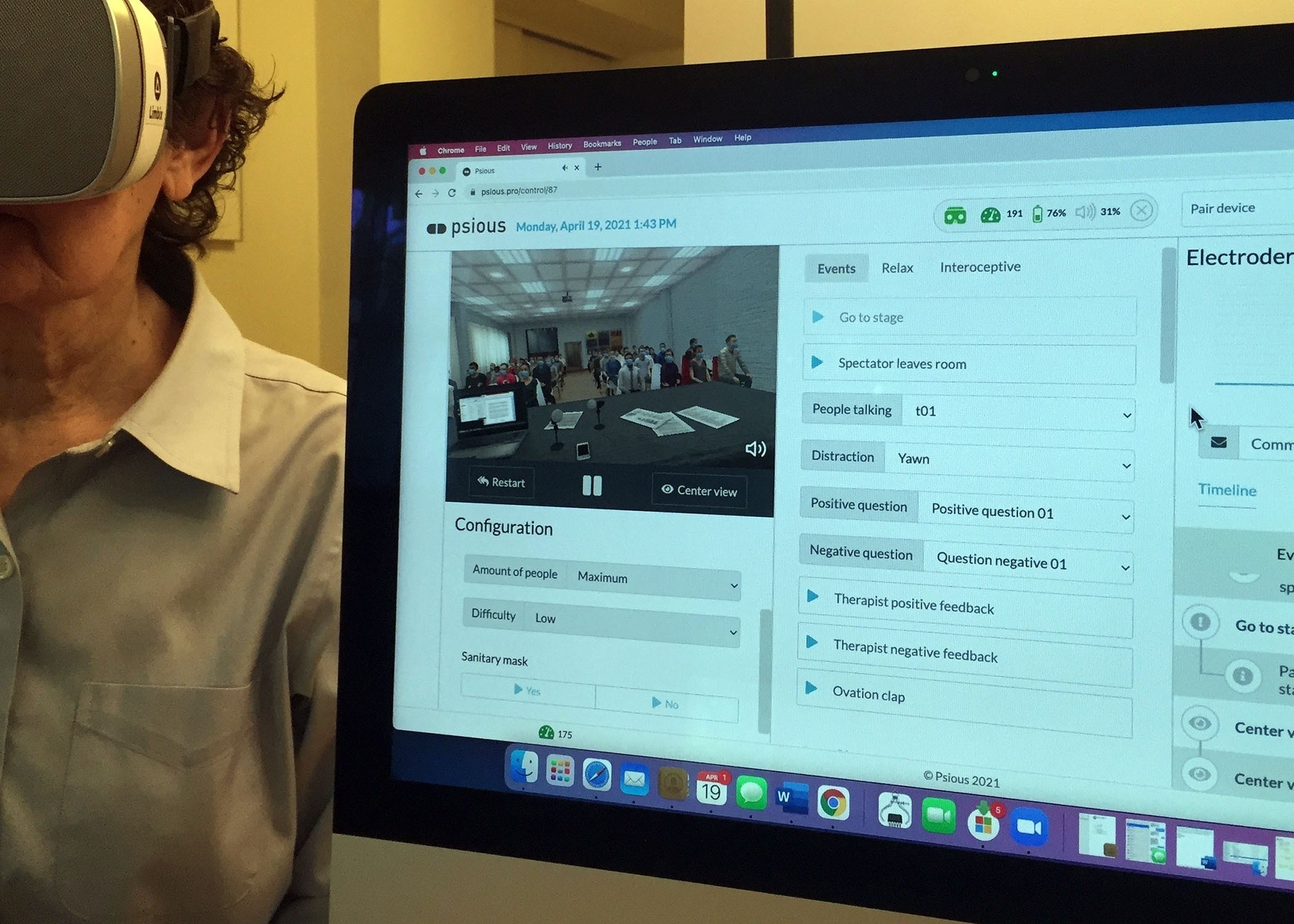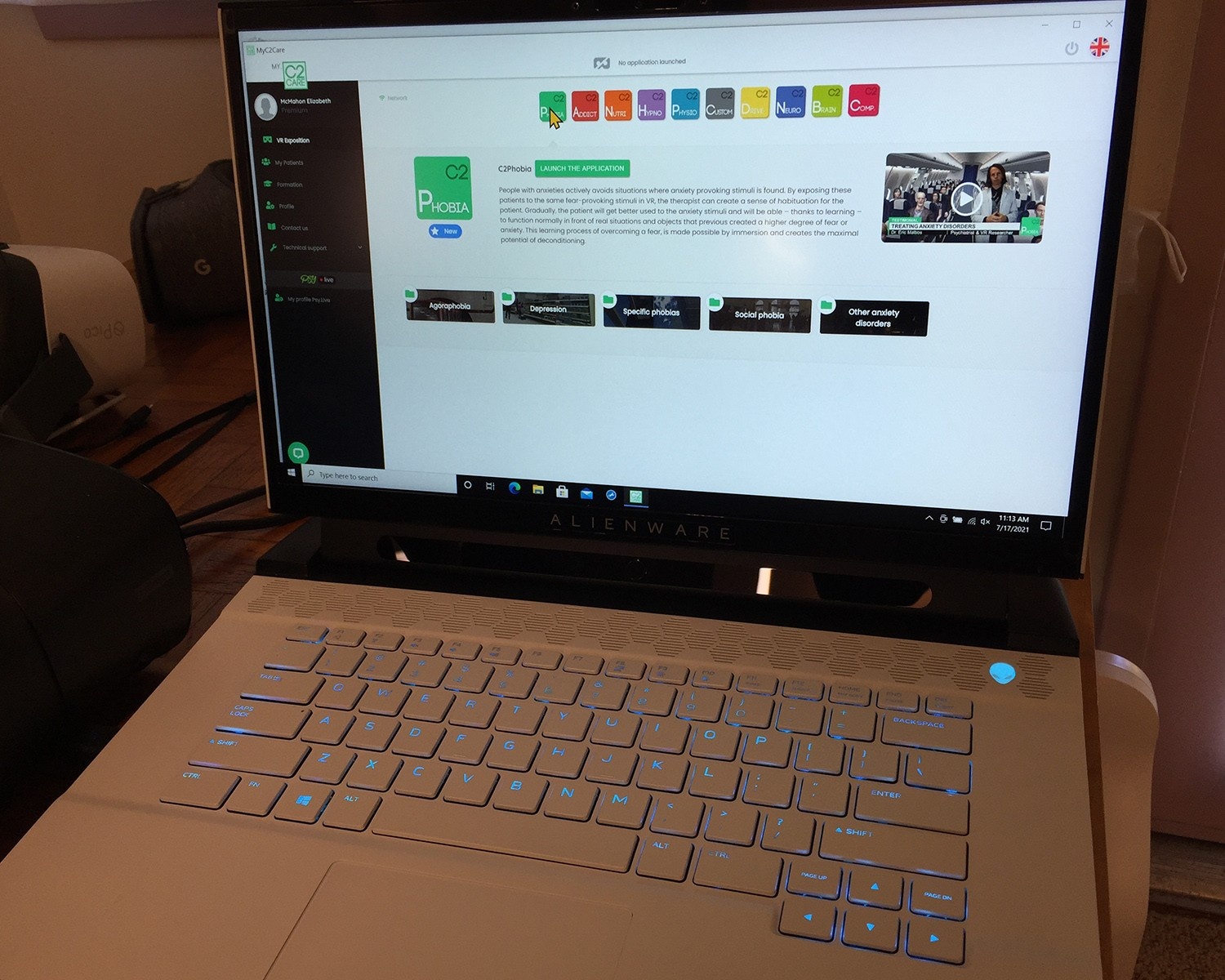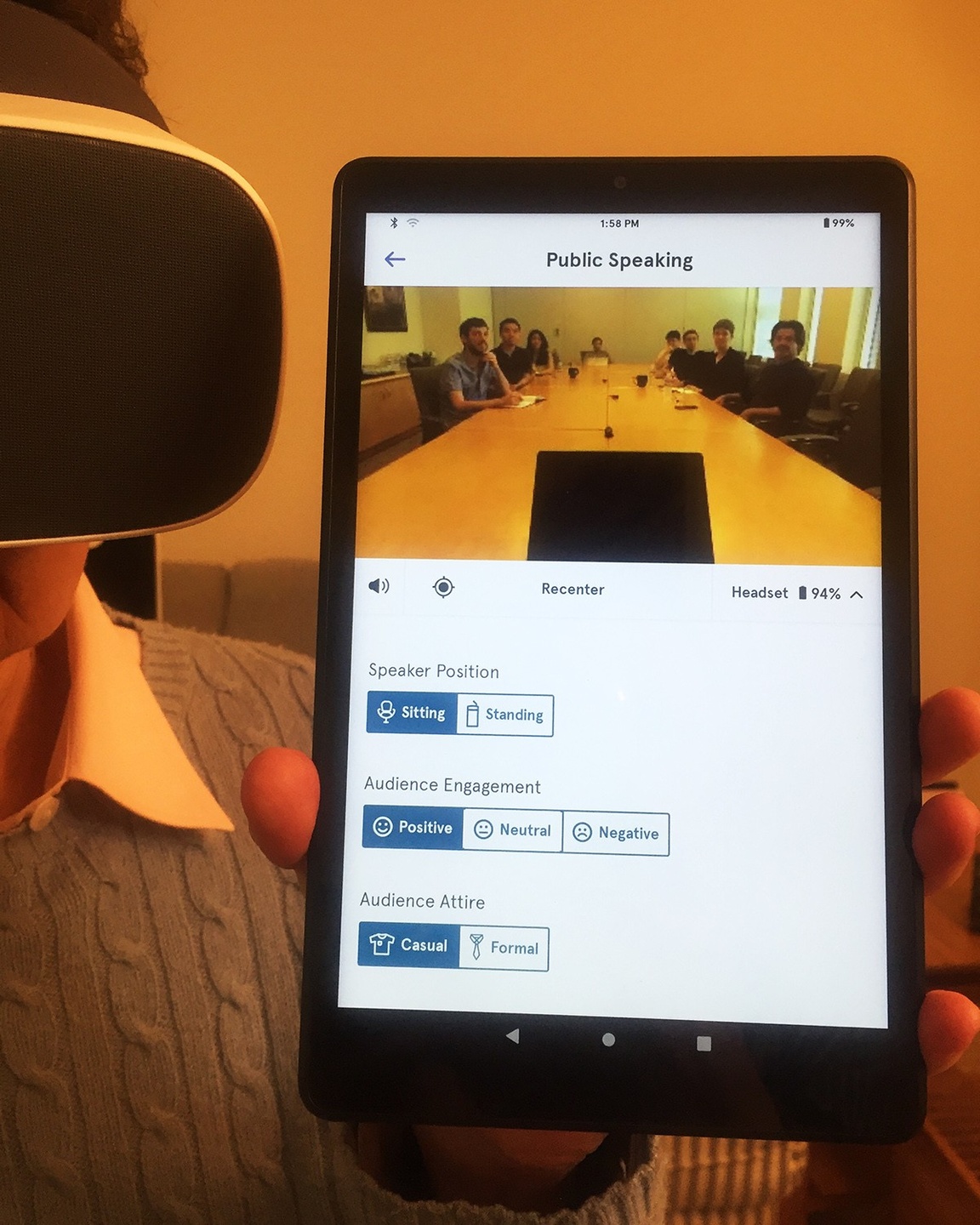VR Therapist Workstations Buyer's Guide
The VR therapist workstation is the device a therapist uses to monitor and control their client’s virtual reality experiences. Typically, the therapist can view a two-dimensional representation of what the client is seeing in their VR headset, use controls to start and stop the virtual environment, or change variables that modify the client's experience.
There are several different types of therapist workstation:
-
Web-browser Based: most VR therapy products use a web browser-based therapist interface that works on standard personal computers or tablets.
-
Gaming Computers: tethered VR headsets require a specialized 'gaming computer' which support a special cable connection to the headset and act as the therapist workstation.
-
Dedicated Tablet Computers: certain VR therapy products that do not require Internet/Wi-Fi access include a dedicated tablet computer as the therapist workstation.
Each of these alternatives is discussed below. Check with your VR therapy product vendor to see what therapist workstation is required or included for your product.
Web Browser Based
Most VR therapy products use web browser software (such as Chrome) on the therapist workstation. The therapist workstation and the client's VR headset both communicate with webserver provided by the product vendor, which coordinates the two devices.
For these VR therapy products, the therapist workstation can be any recent personal computer such as Apple Mac or Microsoft Windows. This computer must have an Internet connection, but this connection can be either wired (Ethernet) or wireless (Wi-Fi). A personal computer may be able to support multiple functions on different windows at one time, such as VR therapy, videoconferencing, and access to client records.
Some of these web browser-based products can also use a standard tablet computer, such as Apple iPad or Microsoft Surface as the therapist workstation (check with the therapy product vendor). The tablet computer must have a wireless Internet connection (Wi-Fi or 5G). Some tablet computers cannot support multiple functions at one time.
Figure: Example Therapist Workstation Display (Psious)

Gaming Computers
A tethered VR headset requires a specialized gaming computer equipped with a sophisticated graphics card to support the headset. This computer also acts as the therapist workstation.
If the VR therapy product package does not include the required computer, ask the vendor to provide detailed specifications for their recommended hardware, software, and accessories or adapters. The vendor may also be able to advise you on where to purchase the necessary equipment and hardware maintenance or support options.
Figure: Gaming Computer Example (Dell/C2care)

A gaming computer must have Internet access (via wired Ethernet or Wi-Fi) during VR therapy and for software installation. Tethered VR headsets are not suitable for teletherapy.
Check with the therapy product vendor before planning to use a portable gaming computer and VR headset on battery power. An additional power source may be required for VR.
A gaming computer is a Windows PC that can be used for other tasks when it is not running VR software. Check with the product vendor if you need to support multiple functions while doing VR.
Dedicated Tablet Computers
Certain VR therapy products designed for use in environments where Internet access and Wi-Fi are not available include a dedicated tablet computer as the therapist workstation. Each tablet is paired with a specific VR headset by the vendor and provided as a package. The tablet and headset devices communicate using short-range wireless signaling. These devices do not support teletherapy.
This type of dedicated tablet computer is locked-in to this specific VR therapy product and cannot be used for other functions.
Figure: Tablet Therapist Workstation Example (BehaVR/Limbix)


